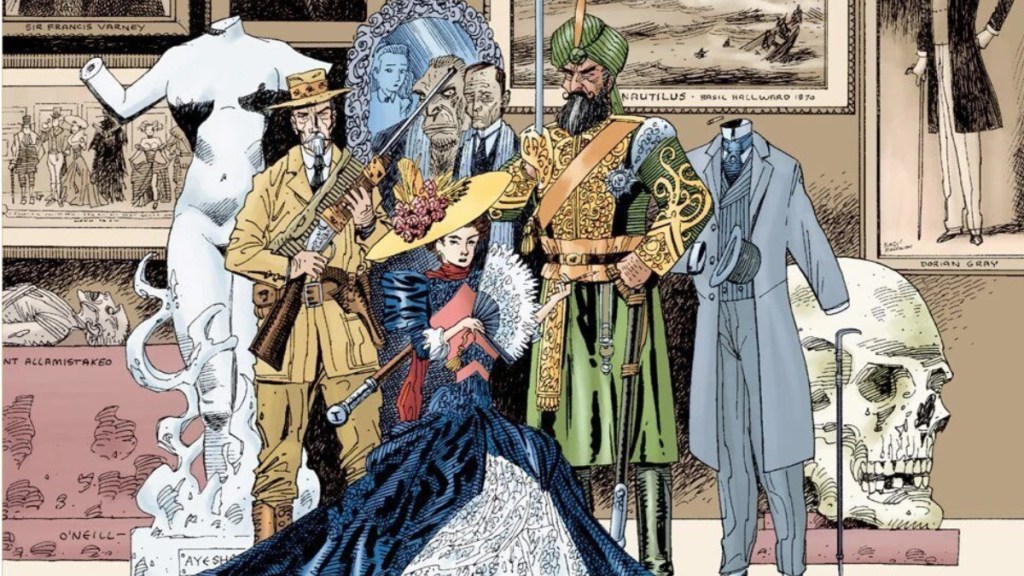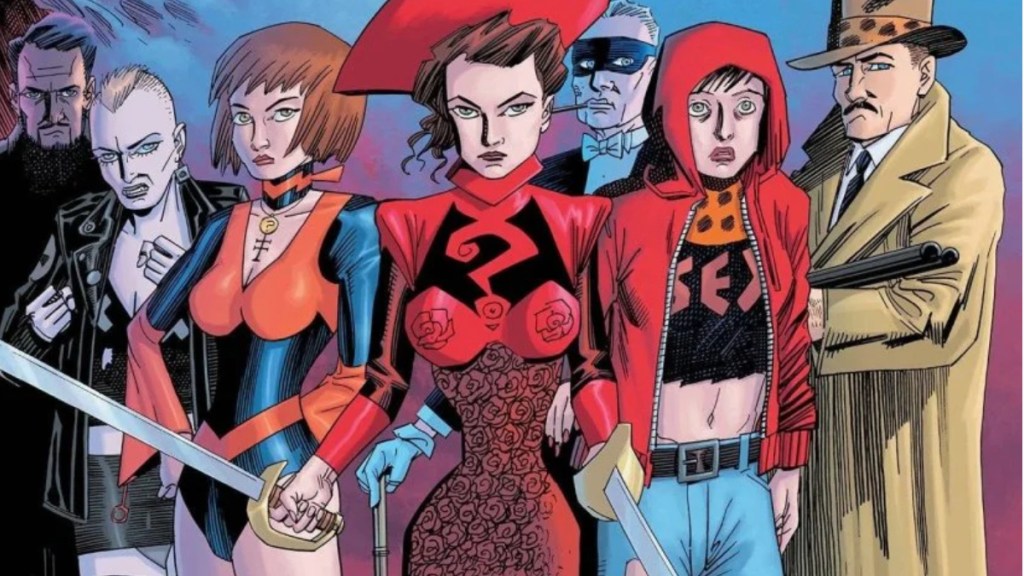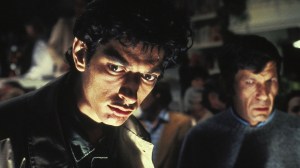Alan Moore deserves his top spot in the rankings of greatest comic creators of all time. Alan Moore has left comics behind, but there are few creators out there whose bodies of work are as celebrated as his. Moore is best known for Watchmen, V for Vendetta, Swamp Thing, his Superman stories “For the Man Who Has Everything” and “Whatever Happened to the Man of Tomorrow?”, and other mainstream DC Comics work, but an argument can be made that many of Moore’s best works come from the period after he left the Big Two behind. An interesting segment of Moore’s career comes from his America’s Best Comics imprint for Wildstorm; when he signed the deal, Wildstorm was a part of Image, but the company was sold to DC not long after. So, from 1999 to 2007, Moore was back to work at DC, albeit two spaces removed, and creating some of the best work of his career. Moore’s America’s Best Comics work is roundly praised, but one series stands above the rest, with almost twenty years of stories marking it from beginning to end — League of Extraordinary Gentlemen.
Videos by ComicBook.com
League of Extraordinary Gentlemen was Moore at his most ambitious. The comic took the classics of literature, all of which had passed into the public domain, and combined them together, creating a massive shared universe of everything from Shakespeare to contemporary fiction. It’s a sumptuous, ambitious work, trying to do something that no comic had ever done before.
The League of Extraordinary Gentlemen Is a Vast and Rewarding Work

Moore wasn’t the first writer in the history of fiction to try something like League of Extraordinary Gentlemen. Nowadays, they’re called “mashup” novels, where writers take multiple literary works and ideas, combining them together, but they’ve been around for a long time in nearly every form of media. For example, how many times has Sherlock Holmes showed up in other character’s stories? Or Dracula or Frankenstein’s Monster or any number of other characters? It was a tried and true tradition when Moore brought it to comics, but the difference was the sheer breadth of what Moore was setting out to do, which wouldn’t be apparent until the book’s first issue came out.
It’s hard to describe the reception to League of Extraordinary Gentlemen #1. The issue is jampacked with references, both those that pertained to the main characters — Dracula’s Mina Murray, Doctor Jekyll/Mister Hyde, 20,000 Leagues Under the Sea‘s Captain Nemo, King Solomon’s Mines’s Allan Quartermain, and Hawley Griffith, the third Invisible Man — but also to a variety of other works. Mycroft Holmes was also there, as was his brother’s archenemy Professor Moriarty, there was a Campion Bond, and many, many more. On top of that, there were the visual references, which the late, great Kevin O’Neill rendered in his unique style. Fans lost their minds over the first issue, and comic magazines like Wizard wrote articles about all of the references in the book in those halcyon pre-Internet day. The book became a bestseller, selling out everywhere, and was a hot ticket on the aftermarket. The first six issues of League of Extraordinary Gentlemen were jam packed with story and entertainment, Moore adding in little flourishes that made it feel like a penny dreadful digest of Victorian England. League of Extraordinary Gentlemen, whether the first or volume or any of the subsequent chapters, is a comic that takes time to read, perusing the pages to try and find every little Easter Egg, all while the brilliant story and characterization ensnare readers.
RELATED: I Think Alan Moore Was Right About the V for Vendetta Movie
However, it was the sequel, pitting the League against the Martians from War of the Worlds, that truly showed the scope of what Moore was trying to do. The League of Extraordinary Gentlemen Volume II included the The New Travelers Almanac, a prose back-up feature to each issue that taught its readers about the wonders of the rest of the world. Not only did the back-ups set up the events that came after, introducing fan favorite characters like Orlando, the sex-changing immortal from Orlando: A Biography by Virginia Woolf, but it did its best to incorporate nearly every novel and folk tale that Moore knew. It’s an amazing work and it showed that Moore was doing more than just using classic characters to tell new stories, but creating the ultimate shared universe. League of Extraordinary Gentlemen: The Black Dossier was more of the same, mixing prose files from the League’s history with Nineteen Eighty-Four by George Orwell and 1950s era sci-fi. This was also the first book where Moore flirted with being sued, as he included Jimmy, a lecherous spy based on James Bond, a character who would become more important as the stories went on.
The last three League of Extraordinary Gentlemen projects — Century, The Nemo Trilogy, and The Tempest — finished out the story of the League. Century took the occult stories of the early 1900s, with characters like The Magician‘s Oliver Haddo, and connected them to Harry Potter, in a scathing rebuke of the latter franchise. The Nemo Trilogy told the story of Captain Nemo’s granddaughter Janni, introduced in Century: 1910, in a series of stories that combined Lovecraftian horror with German art films of the early 1900s and World War II, and finally movies like The Boys from Brazil with the legends of Ayesha of Kor. The Tempest brought it all home, combining ideas introduced in The New Travelers Almanac with the form and ideas of the British comics that Moore grew up reading for the strangest, and most hopeful, apocalypse of all time.
When talking about League of Extraordinary Gentlemen, it’s easy to just talk about the stories and their origins, but that leaves out the beauty of the craft of the book. It’s plain to see that Moore loved writing the series, his acerbic wit and joyful sense of humor taking over often. The characters, especially Mina, Orlando, Janni Nemo, Allan, and Hyde, are all amazing, with Moore adding layers to each of them that make them easy to love. Moore was having fun writing the book, and it’s apparent everywhere. Kevin O’Neill’s art is the MVP. Moore is known for writing ridiculously detailed scripts, and O’Neill did an amazing job of bringing it all to life. Every panel is alive with detail. O’Neill’s designs are always amazing; Nemo’s Lincoln Island is a techno-pirate dreamland, the League’s Vauxhall headquarters is full of curiosities from across fiction, Berlin from The Nemo Trilogy: The Roses of Berlin is a fascist nightmare combined with the classic German film Metropolis, and that’s not even counting the places that just make one appearance. His eye for character design is just as keen as well; O’Neill was given artist’s dream — being able to design some of literature’s greatest characters — and he always impressed. League of Extraordinary Gentlemen is a near perfect comic, two professionals using all of their power to bring something amazing to readers.
The League of Extraordinary Gentlemen Is One of Moore’s Greatest Successes

If there’s anyone who could find a way to bring together the greatest works of literature from across the world, it’s Moore. League of Extraordinary Gentlemen was a hit from the word go. Moore has always had his problems with superheroes, but League of Extraordinary Gentlemen was Moore doing superheroes in the most literary way possible. The seeds were planted right from the beginning for a reading experience that rewarded the reader for the more attention that they paid to the details of the book. League of Extraordinary Gentlemen is like a fractal, each time the camera pulled out revealing more and more detail. It’s hard to know if Moore planned for it to be what it became; he definitely planted seeds that would germinate if Moore and O’Neill got to do more volumes of the book. The first volume of League of Extraordinary Gentlemen is a masterwork even on its own, with every subsequent chapter somehow topping it.
It’s hard to imagine a work with the scope of League of Extraordinary Gentlemen succeeding, but it does so wildly. I was late to the party with the League, but once I read it, I got to experience a work beyond anything I had ever imagined. The way that Moore wove together the disparate stories of thousands of pieces of fiction and made it seamless is amazing, and that doesn’t even begin to bring up the social satire that Moore throws into the book, sometimes subtle and sometimes brick to the head. There’s even some prescient sections in The Tempest, lampooning the rise of the far right in US and UK politics. A lot of people, especially Harry Potter fans, took the book as Moore saying that contemporary pop culture can’t compare to what came before. There’s definitely some of that — and for what it’s worth, Moore has a point — but Moore also pulls in multiple contemporary stories from 30 Rock to South Park. Personally, I always looked at the League and their tales as a celebration of the human imagination. Moore and O’Neill’s opinions definitely shine through, but the sheer love that went into every panel and page of the book is palpable.
The League of Extraordinary Gentlemen series isn’t usually numbered among the top of Moore’s oeuvre, but it definitely should be. It’s a masterpiece of imagination, its chaotic structure belying the beauty at the heart of it. By the time you get to The Tempest, you’ve been on a road that has spanned centuries, meeting the greatest characters imaginable, and shedding many tears (mostly in The Nemo Trilogy, which might be my favorite chapter). Moore and O’Neill were able to create a cohesive form when it shouldn’t have been possible. It’s a masterwork in every way, and easily Moore’s most ambitious project.








